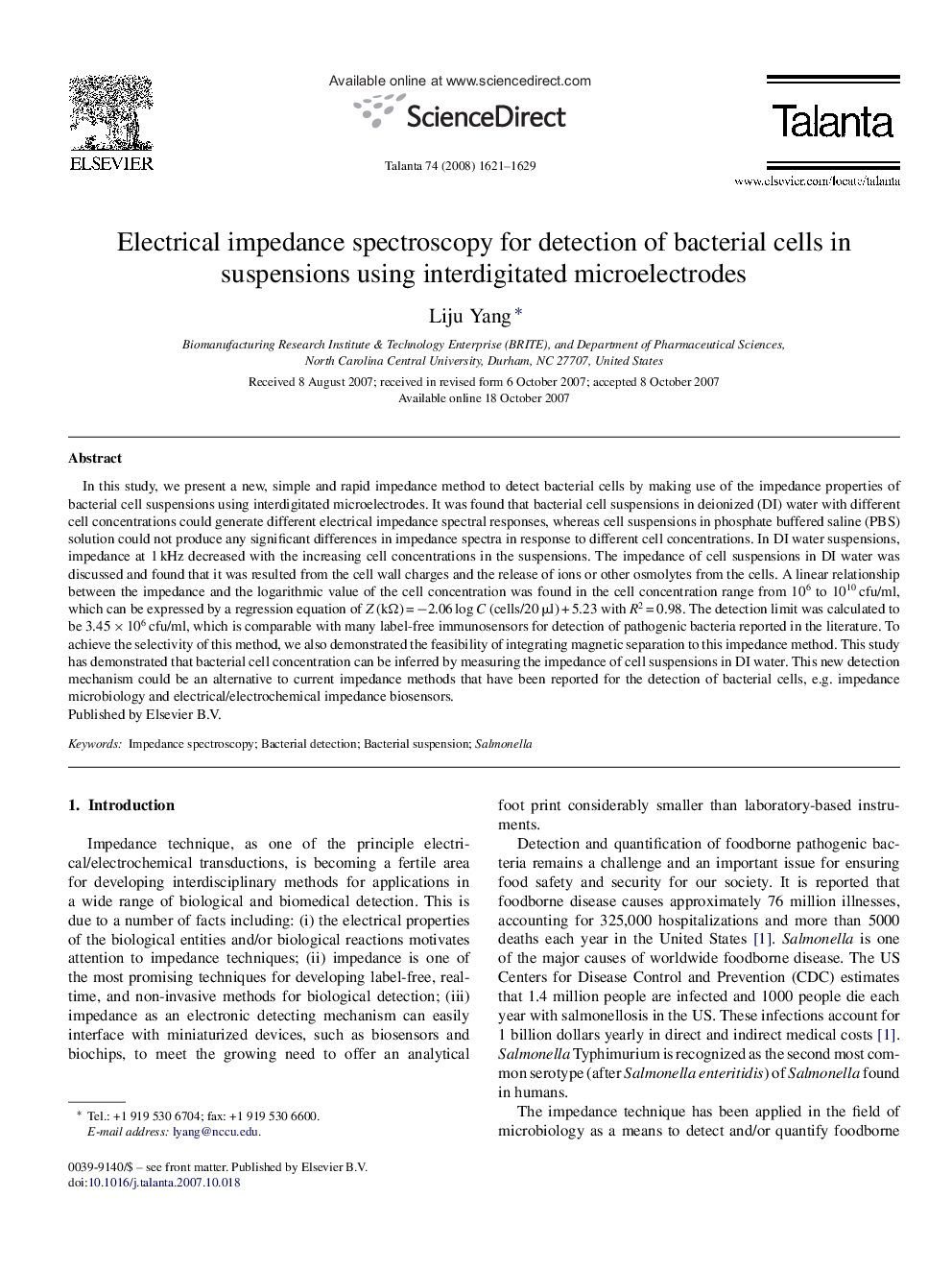| Article ID | Journal | Published Year | Pages | File Type |
|---|---|---|---|---|
| 1244564 | Talanta | 2008 | 9 Pages |
In this study, we present a new, simple and rapid impedance method to detect bacterial cells by making use of the impedance properties of bacterial cell suspensions using interdigitated microelectrodes. It was found that bacterial cell suspensions in deionized (DI) water with different cell concentrations could generate different electrical impedance spectral responses, whereas cell suspensions in phosphate buffered saline (PBS) solution could not produce any significant differences in impedance spectra in response to different cell concentrations. In DI water suspensions, impedance at 1 kHz decreased with the increasing cell concentrations in the suspensions. The impedance of cell suspensions in DI water was discussed and found that it was resulted from the cell wall charges and the release of ions or other osmolytes from the cells. A linear relationship between the impedance and the logarithmic value of the cell concentration was found in the cell concentration range from 106 to 1010 cfu/ml, which can be expressed by a regression equation of Z (kΩ) = −2.06 log C (cells/20 μl) + 5.23 with R2 = 0.98. The detection limit was calculated to be 3.45 × 106 cfu/ml, which is comparable with many label-free immunosensors for detection of pathogenic bacteria reported in the literature. To achieve the selectivity of this method, we also demonstrated the feasibility of integrating magnetic separation to this impedance method. This study has demonstrated that bacterial cell concentration can be inferred by measuring the impedance of cell suspensions in DI water. This new detection mechanism could be an alternative to current impedance methods that have been reported for the detection of bacterial cells, e.g. impedance microbiology and electrical/electrochemical impedance biosensors.
